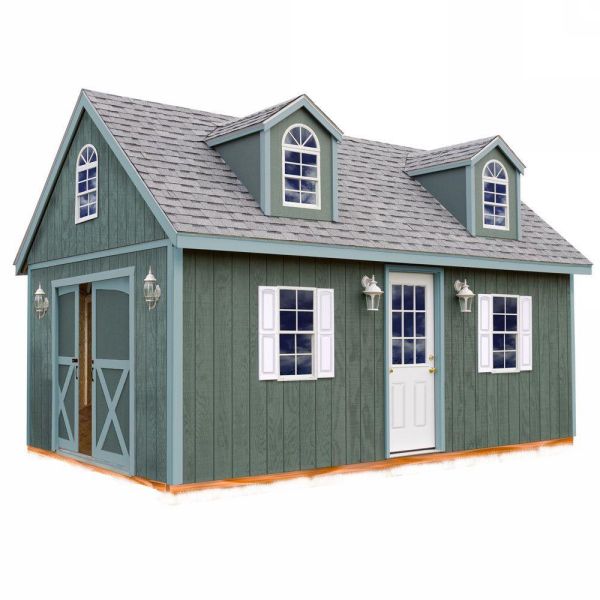
Building a proper foundation is the most important step in your shed schematics. The first item on your shed plan should be to level the ground where the (https://shedconstructionplans.com/12×16-storage-shed-plans-blueprints) shed will go and add gravel. The gravel bed will make sure that the soil beneath the shed will not wash away. The main kinds of foundations used for outbuildings are permanent or on grade. On-grade foundations are suitable for small- to medium-size outhouse schematics up to about 200 square feet.
These smaller foundations are typically made of solid concrete blocks or wooden timbers placed directly on the ground. When placing timber directly on the ground be sure that it is green or pressure-treated. If you opt to use blocks be sure to choose ones made of solid cement as hollow-core wall blocks will crack under the weight of the building. Both the concrete blocks and wooden timbers must first be even and spaced closely enough to support a outhouse’s floor frame. By properly constructing a foundation with the correct materials you will guarantee a durable outhouse.

You may need to pay a little extra for shed materials that require minimal upkeep but they will save you time and trouble later on. We recommend using panels of PVC trim in whatever color called for in your garden outhouse diagrams. You will never have to worry about your plastic PVC edging splitting or rotting like wood. Use high performance aluminum for your windows which will never swell or warp over time. Aluminum is another great choice because over the life of the outhouse you will save money while achieving excellent energy outcomes.
Aluminum is a great choice with regards to environmentally sustainable material and was one of the highest recycling rates. Some brands of synthetic slate are manufactured with virgin rubber or plastic but most use recycled materials. Authentic shingles made of slate have been the roofing material of choice for decades but consider using shingles made of synthetic materials. Faux-slate shingles are more durable and much less expensive than authentic slate. Safety is built-in with synthetic slate because they contain impact modifiers to help withstand storm damage.
Some parts of shed building schematics are simply too time consuming to do yourself. Look into hiring a landscape company to help get rid of any obstructing bushes or shrubs. You can rent out an excavator for a day to dig postholes or haul dirt. (additional info) Look for a local mason to mix and pour any concrete footings and slabs. Make use of a licensed electrician when you decide to electrify the outbuilding.
Many people will get their family and neighbors involved in the outhouse project for extra help. Many tools that you don’t have are available for rent from most hardware stores. If you are a novice builder you can easily buy scaled drawings and construction details from hardware stores. Starting a outbuilding from nothing can be overwhelming so look into outbuilding kits. There are many databases where you can find a contractor in your town to do most or all of the work.
You must frame the exterior walls of your outbuilding for full support and stability. To build a wall frame you will need 2×4 pieces of wood and either nails or screws. For one wall you will need 4 pieces of wood cut to your desired length and height. These pieces should be fastened together to make a simple rectangular frame.
The key to easily framing the exterior outbuilding walls is to make sure the walls are square and level. Support your wall by placing more 2X4s every two feet in the interior of the frame. Add ¾-inch plywood to make your frame sturdier and more durable. When the rear wall is built flip it over to have it in the correct position to stand. Follow suit with the remaining walls and be sure you are leveling the angles at all times. Once the back wall has been affixed you can raise all 4 exterior walls.